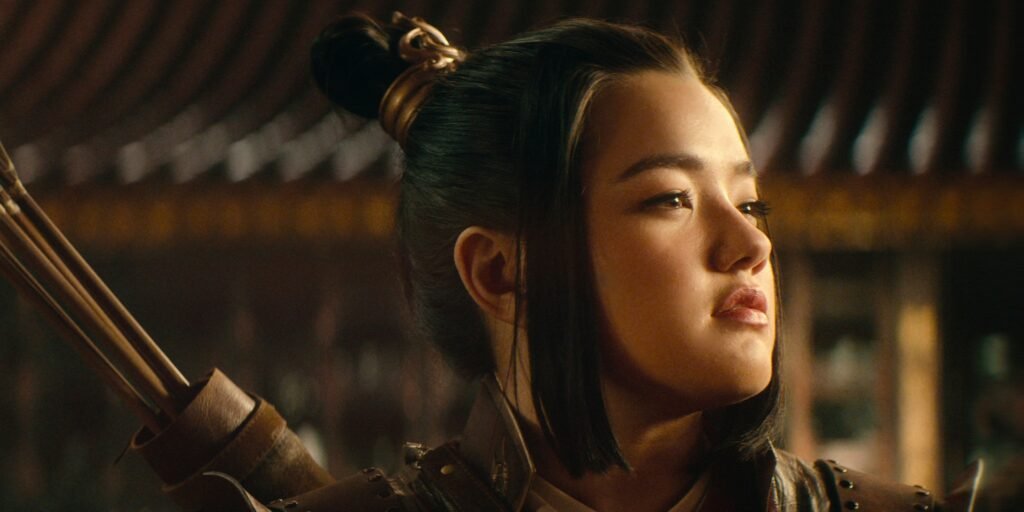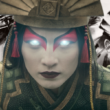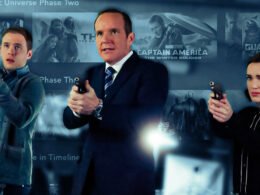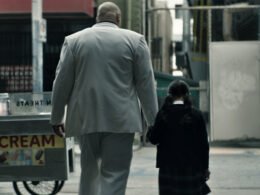This spoiler-free review is made possible by advanced screeners of Episodes 1-8 of Avatar: The Last Airbender to Agents of Fandom by Netflix for review purposes.
When word first spread of Netflix creating its own live-action adaptation of Avatar: The Last Airbender, there was a heavy dose of cautious optimism mixed with fear from the fans. It is not the first time this beloved franchise has had a live-action adaptation. Fans still groan about — or aggressively deny the existence of — M. Night Shyamalan‘s The Last Airbender movie from 2010. With the original creators Bryan Konietzko and Michael Dante DiMartino leaving the project as well, worry grew even more. But once the news of casting was revealed, and images and trailers emerged, the fandom grew a sense of optimism.
Rest assured, Netflix’s Avatar: The Last Airbender is not the 2010 movie; it is far superior to it. The action, plot points, and the majority of the casting are better in nearly every way. With that aside, the real question arises — is this the live-action adaptation that this show, and franchise, deserve? In many ways, the series delivers on what fans should expect. In others, it stumbles on a young cast who grow into their roles as the season goes on.
Netflix’s ‘Avatar: The Last Airbender’ Review: The World of Avatar Accurately Brought to Life

One of the key points heading into the series is the casting. Led by a primarily Asian and Indigenous cast, showrunner Albert Kim is able to portray the world of Avatar properly. For an animated series based on Asian culture and folklore, this is a non-starter. The main cast of Aang (Gordon Cormier), Katara (Kiawentiio), Sokka (Ian Ousley), Zuko (Dallas Liu), Uncle Iroh (Paul Sun-Hyung Lee), and Fire Lord Ozai (Daniel Dae Kim) visually nail their characters.
While young actors like Cormier and Kiawentiio take time to settle into their roles, starting out a little stiff in areas, the major standout is Ousley as Sokka. His comedic timing, deadpan facial expressions, and over-the-top reactions are a perfect reflection of Sokka in the real world. Daniel Dae Kim is intimidating and stern as Ozai, completely stealing scenes he’s in.
Perhaps the disappointment of the cast is Sun-Hyung Lee’s Uncle Iroh. It is incredibly challenging to take on a role that is so distinct in the animated series. Iroh’s animated voices (Mako and Greg Baldwin) define that character’s spirit and Sun-Hyung Lee puts his own take on what Iroh would sound like. The result, while still decent, just never feels like Iroh.
The world itself is beautiful. Beloved places in the animated series like Omashu, the Southern Air Temple, and the Northern Water Tribe completely come to life. The visuals are stunning and it’s obvious an incredible amount of time was put into making the environments feel real. Adored animal hybrids also make their way into live-action, rarely feeling out of place from the physical sets around them. Most importantly, Aang’s trusted companion Appa looks great; a giant fluffy fur-ball you’d want to give the biggest hug.
Bending Finally Looks and Feels Real

A major concern heading into this series is what bending would look like in live-action on a TV show budget. In 2010, movie-goers were distraught by an infamous scene where a group of earthbenders come together to slowly lift and throw a small boulder across the scene. A far cry from what earthbending looks like in the animated show. Fortunately, as with the visuals of the sets and animal hybrids, time and care are spent making each element feel unique and, frankly, really cool.
Firebending is incredibly powerful; it’s dangerous, and terrifying, and swallows everything in its path. Earthbending is strong and sturdy, while water and airbending are both beautiful and elegant. Most importantly when it comes to fighting and action scenes, the bending is quick. The lightning-fast camera cuts and enhanced movement from the VFX artists help sell the bending as best it can. It is, of course, far from perfect — it will never feel completely real to see a floating ball of water. And air needs some sort of effect around it as well, for a visual aid to the viewer.
The majority of the fight styles mimic that from the animated series. Aang often uses Baguazhang when he is airbending and Katara practices Tai Chi on the river fronts. There are times, however, that look a little strange. Firebenders sometimes appear to be doing more of a “Kamehameha” rather than the direct Northern Shaolin fighting style.
Netflix’s ‘Avatar: The Last Airbender’ Takes Its Own Path but Reaches the Same Destination

There has been plenty of talk online about the removal of key elements from the animated series to this adaptation. In the end, the characters never stray from the core values of who they are. Sokka’s sexism from the animated show has been removed. However, that doesn’t mean Sokka doesn’t go through his journey of becoming a leader to his tribe. Zuko isn’t focused on honor itself after his banishment but on the acceptance and respect of his father — the thing he thought was honor in the animated series. Certain storylines from the animated series are blended together as one but their stories tie together nicely.
With each episode having a longer runtime, it allows for the exploration of extra characters. Azula (Elizabeth Yu) is not seen in the animated series until the final moments of Season 1. Here, Azula is introduced early on training to earn Ozai’s respect. Yu plays a young Azula extremely well. Sharp and intense, with flares and teases of her true potential to come if there is a second or third season. These added elements give Azula a deeper story moving forward.
Hardcore fans of the franchise have come to adore the novels. These YA books, Chronicles of the Avatar written by author F.C. Yee, expand on the Avatarverse by diving deeper into the lives and histories of past Avatars. Plenty of nods and incredibly important pieces of lore from the novels are referenced throughout the show. None of these nuggets change the story drastically, but they add a layer that was not yet created when the initial show aired in 2005.
Netflix’s Adaptation Has Earned a Season 2

In the animated series, it is commonly accepted by the fandom that the show gets better with every season. While there is not an exact ticking time clock with Sozin’s Comet in this live-action series, we do know that it is coming once again. The groundwork with this show has been paved, but only time will tell if the seasons improve on its strong start.
The main cast improves with every episode as the season goes along; the world comes together and the lore is expanded upon; the gang does get distracted and go on side-stories, with the result of those leading to the greater goal of getting to the Northern Water Tribe. Most importantly, the best changes are the ones that will leave fans gasping, clapping, and cheering in their seats.
Although some story elements have been removed, in the end, this show still feels like Avatar: The Last Airbender. There’s still hope, laughs, and great characters — and, of course, there is still the cabbage merchant. It took its own path but the Avatarverse has finally, and properly, been brought to life.
Follow the Agents of Fandom socials for all the latest entertainment news and reviews.
'Avatar: The Last Airbender' Review
'Avatar: The Last Airbender' ReviewThe Good
- The visuals around bending look great.
- Azula's added backstory is a welcome surprise.
- Additional lore from the novels adds context for hardcore fans.
The Bad
- The young cast's acting can be stiff at times.
- Some changes to the story are questionable.












1 comment